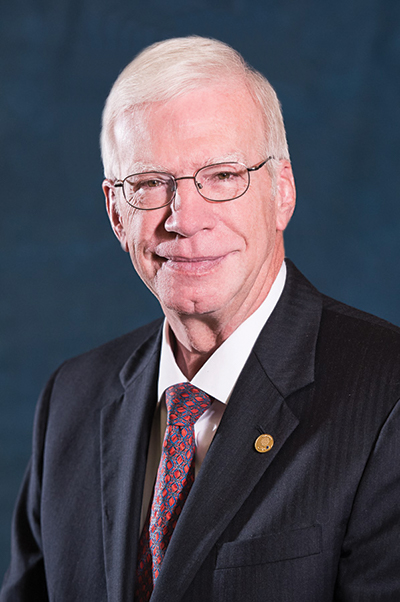August 2018—This year, I made a point of noticing just how much goes on during the AMA Annual Meeting so I could tell you about it. There are 600 delegates now and an equal number of alternates. More special sections give us more ways to engage, and we do. It’s challenging, enjoyable, and exhausting at once.

R. Bruce Williams, MD
When I walk into all that activity, I’m always glad to see William V. Harrer, MD, who chairs our AMA delegation. Dr. Harrer is an observant guy who enjoys the muted chaos. He does his homework and is a valuable voice of reason when there’s a need to pivot. He’s a quick study and a good listener, which is probably why he can so often see opportunities to collaborate.
At this year’s meeting, we introduced and secured House of Delegates approval for a resolution calling for appropriate provisions in laboratory benefit management programs administered by health insurance payers or their affiliates to prevent potential conflicts of interest and administrative barriers to care. In the reference committee, where delegates argue the merits of resolutions, our team was able to clarify the ways that these programs, which sometimes incorporate prior authorization requirements, could limit or deny patient access to needed pathology and laboratory services.
I came to know the AMA 20 years ago, when I attended meetings as president of the Louisiana State Medical Society. Then, as now, there were contentious proposals. And then, as now, we were committed to finding compromises that everyone could accept and explain to colleagues as well as legislative, regulatory, and public health entities. I think that is why general news reports will so often include AMA policy—they know doctors are too smart to be stubborn without good reason. We know when to stand firm and when to pivot.
The AMA continues to be important because its leaders are willing to evolve. Twenty years ago, the AMA embraced specialty society representation. This year, the AMA extended parity to specialty societies, giving those with enough eligible members more delegate positions in the AMA House of Delegates.
Mark Synovec, MD, who chairs the AMA Pathology Section Council, says that parity in HOD representation is the single most significant development of the 2018 meeting, and I think he’s right. The CAP, American Society for Clinical Pathology, and United States and Canadian Academy of Pathology each gained delegates and alternates, boosting our influence. Specialty society parity enables more opportunities to talk through nuances that not everyone knows and think through potential challenges emerging in a handful of places. It gives us more experts to bring everyone up to speed, as when CAP delegate Susan Strate, MD, testified in reference committee last year about how genetics and genomics affect patient care, and the reference committee report quoted her verbatim. James Caruso, MD, a forensic pathologist, has contributed invaluable insight on proposals tied to the opioid crisis. The informational reports are outstanding. A lot of learning goes on at the AMA.
 CAP TODAY Pathology/Laboratory Medicine/Laboratory Management
CAP TODAY Pathology/Laboratory Medicine/Laboratory Management
